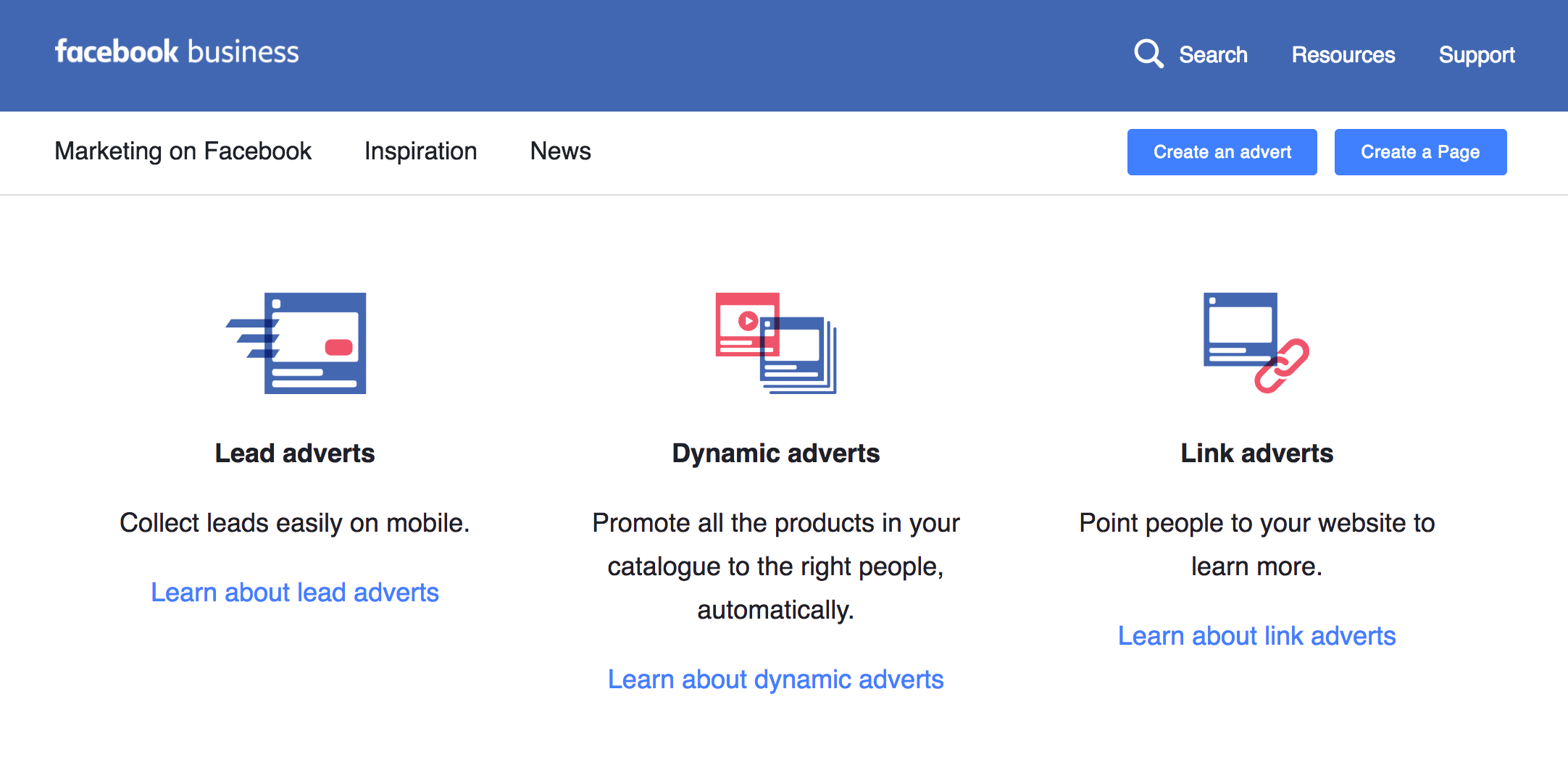Facebook advertising gives eCommerce businesses the opportunity to reach potential customers where they already spend a significant amount of time. Their nearly 1.7 billion monthly active users spend an average of 50 minutes a day on the social giant’s three platforms: Facebook, Instagram and Messenger. That value represents not only the time Facebook users see advertisements on the platform, but also the time Facebook has to gather additional information about them. In this article, I will explain how Facebook ads work, then share top tips from Facebook advertising experts on using the platform to advertise your eCommerce business.
An Overview of Facebook Ads
While Facebook ads can be created from any Facebook account, the most effective use of these ads ties them to a Facebook Business Page, which provides more options for you to promote your eCommerce site. To display your created ad on Facebook, the first step is to decide where your ad will display on Facebook: either mobile, desktop or both. These placements all have their unique advantages, and determine the types of ads you can create, from Page post ads and video ads to multi-product or carousel ads.


Each ad that you create for Facebook should have an objective — the specific goal you are trying to achieve from the ad. This can be website visits, conversions, post engagement, app installations, offer claims, or one of these other objective options. You can then use Facebook’s advanced targeting features to narrowly define the audience you want to reach, to ensure that your ad gets to the right viewers based on demographics, location and interests.
The following tips feature advice from expert Facebook advertisers, which will help you make the most of Facebook advertising for your eCommerce business.
Tips From Facebook Ad Experts
Jon Loomer
1. Focus on Current Customers and Leads
Loomer encourages businesses to use Facebook’s Custom Audiences feature, which employs a database like your email list to find customers on Facebook. These customers are already engaged and interested in your products, making them more likely to make a purchase.
2. Expand Your Reach With Lookalike Audiences
Building on your Custom Audience, Loomer recommends using that audience to create a Lookalike Audience — composed of Facebook users who aren’t customers yet, but have similar characters to your Custom Audience. Facebook uses its wealth of user data to find new customers who are most likely to be receptive to your message and ads.
Amy Porterfield
1. Take Advantage of News Feed Ads
With no right-hand column for ads on mobile — and Facebook mobile ads outpacing desktop ad earnings by more than 2.5 times — using News Feed Ads that appear on mobile is essential for Facebook Ad success. Switching to News Feed-only ads increased Porterfield’s click-through rate from 0.1% to 4-7%.
2. Only Target Fans With Promoted Posts
Promoted Posts, which appear as Sponsored Stories in Facebook users’ News Feeds, can come across as spam when seen by the wider Facebook audience. Instead, Porterfield suggests using Promoted Posts to re-engage those fans who “already know you, trust you, and want to engage with you.”
Andrea Vahl
1. Create an Eye-Catching Image
An image will catch a potential customer’s attention much more than any text that is part of your Facebook ad. In addition to following Facebook’s requirements for size and a 20-percent text maximum, Vahl suggests taking time to design an attractive ad featuring compelling images.
2. Split Test Your Ads
Split testing allows you to make small changes to an ad, like the image used or the demographic targeted, and then compare the results. The Facebook ads reporting area lets you view the analytics for both and use that information to continue running the most successful version. You can also make use of split-testing tools like AdEspresso and Qwaya to determine the most effective ads for your business.
Kim Garst
1. Use Conversion Tracking
Like most business investments, it’s important to know where your Facebook advertising dollars are going — and whether or not they are working. Garst encourages advertisers to take advantage of the conversion tracking tools offered by Facebook to identify the exact ads that led to sales on your website.
2. Make Your Call-to-Action Clear
The most effective ads tell the viewer exactly what they should do next. Along with identifying a specific action for Facebook users to take on your ad, you can also encourage action with Facebook’s CTA buttons on your business Facebook page.
Rick Mulready
1. Use Testimonial Ads
Social media is all about sharing, so it’s no surprise that testimonials are one of the most effective ad types. Not only are testimonial ads social proof, but they build a “connection with your target audience,” showing them how you benefited others who are like them.
2. Target Website Visitors
Facebook’s tools allow for retargeting of customers who visited your sales page but did not make a purchase. Mulready encourages the use of the Facebook pixels to retarget audiences who visited the sales page but didn’t continue on to the thank you or sales completed page.
As a platform, Facebook provides a wealth of tools to reach your audience and create sales. These tips from the experts in maximizing results from Facebook advertising will help you effectively use Facebook ads for your eCommerce business.








